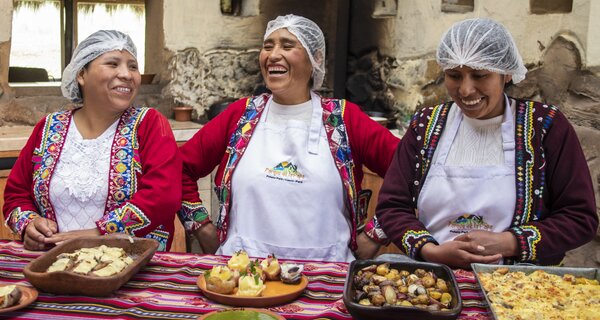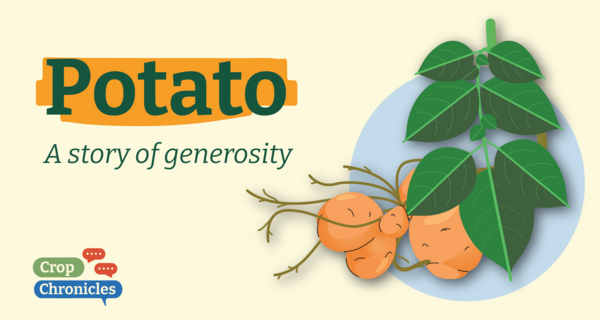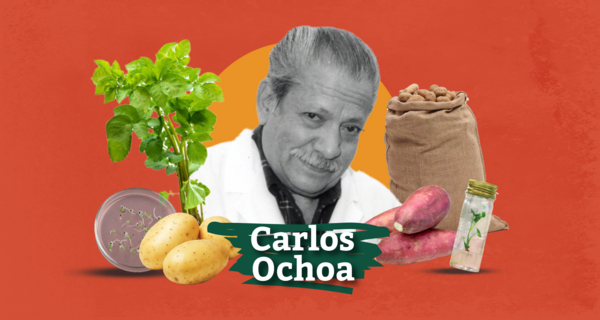The Wow Potatoes of Kenya: Fighting Late Blight with Farmer-Approved, Disease-Resistant Spuds
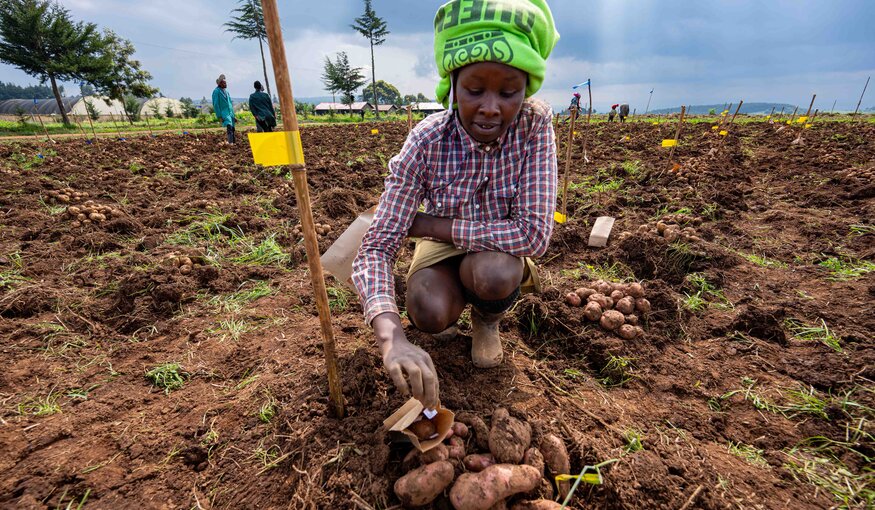
30 May 2025
“We’re only looking for ‘wow!’ potatoes,” says Thiago Mendes, scanning rows of tubers in Kenya’s Nakuru highlands. As a potato breeder with the International Potato Center (CIP), he’s on a mission to find varieties that can do what fungicides can’t – fight off late blight, one of the deadliest plant diseases in the world.
Late blight is infamous for triggering the Irish Potato Famine of the 1840s, but it’s still wreaking havoc today. Including in Kenya, where potatoes are the second most consumed crop after maize. For smallholder farmers, an outbreak can wipe out entire fields, cutting incomes and threatening food security.
“Farmers can control late blight using fungicides, but that comes at a price,” Thiago explains. “It’s costly, harmful to health and damaging to the environment.” Frequent exposure to fungicides puts farmers at risk, while contaminating soil, water and pollinators.
That’s why Thiago and his team are working to breed new potatoes with late blight resistance that thrive in local conditions without relying on chemical sprays. Supported by the Crop Trust’s BOLD Project, they’re tapping into the diversity of potato wild relatives to find long-term, sustainable solutions.
Breeding Resilience, One Cross at a Time
This work builds on years of research. Under the Crop Wild Relatives Project, which was funded by Norway and coordinated by the Crop Trust, CIP breeders in Peru crossed cultivated potatoes with wild relatives known for their natural late blight resistance. After multiple cycles of selection and refinement, varieties like CIP-Matilde were developed and released.
But transferring that success to East Africa is not straightforward. “We’re using the diversity generated in Peru and adapting it to local conditions here,” says Thiago. “That requires field trials in different environments and, crucially, understanding what farmers actually want.”
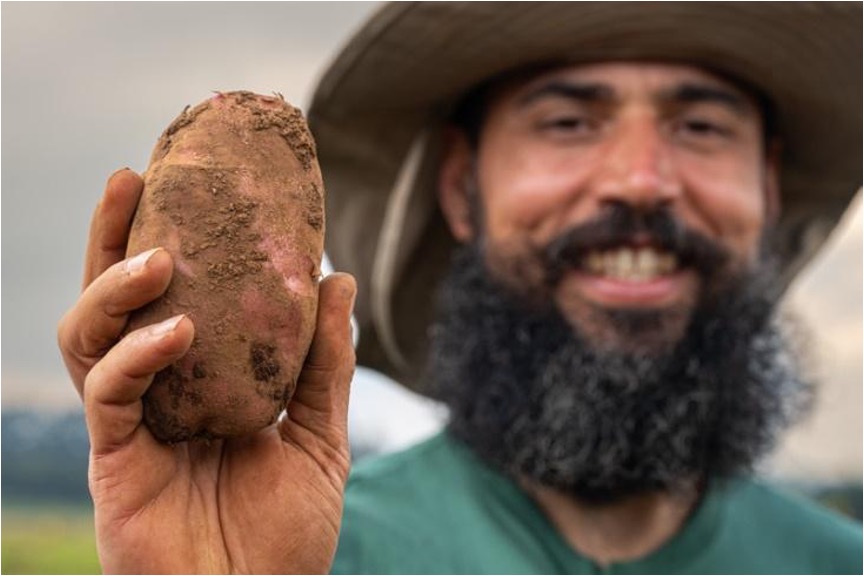
Thiago Mendes shows off a ‘wow’ potato. Credit: Crop Trust/Mike Major
Trials in Nakuru: Looking for Standouts
In Nakuru County, Thiago’s team planted hundreds of candidate potatoes. Around 80 days after sowing, the plants began to flower. No fungicides were applied, allowing late blight to spread naturally. Many plants succumbed, but some showed promising levels of resistance.
“These are preliminary results,” Thiago notes. “We’re identifying plants that appear to tolerate the disease well, but further testing is needed to confirm how they perform in other locations and seasons.”
The team marked these promising plants with yellow flags. After harvest, they evaluated the tubers, scoring them for size, shape and quality. Around 100 candidates were promoted to further trials.
Farmers Weigh In: Seeds and Slips
Recognizing that farmers define quality differently than scientists, the CIP team brought in local growers to help with selection. The participatory exercise used a simple but effective voting method: women used beans and men used maize seeds to cast their votes for the traits they valued most – whether it be skin color, size, stem strength, leaf shape or cooking properties.
Later, farmers were invited to review the shortlisted tubers in the field, this time using numbered slips of paper to indicate their preferences. This two-step process ensured that both agronomic performance and farmer priorities were considered in narrowing down the selection.
One insight emerged clearly. Farmers preferred plants that produced a mix of tuber sizes – larger ones for market sale, smaller ones for planting.
“The feedback was incredibly valuable,” says Thiago. “It helped guide us in refining which varieties to take forward.”
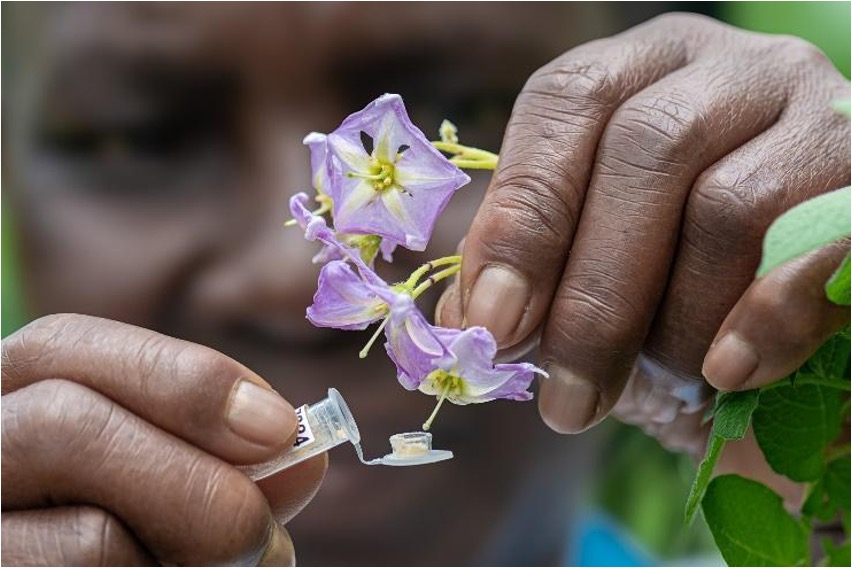
The field trial at the Sirikwa farm had thousands of potato genotypes derived from 29 original crosses. Photo: Crop Trust/Mike Major
Building a Regional Breeding Network
Beyond these Kenyan trials, Thiago’s team is contributing to a larger effort to strengthen potato breeding across East Africa. CIP has helped establish a regional network of breeders who collaborate to develop and disseminate improved varieties.
“This network is key,” says Thiago. “It’s not just about producing a better potato – it’s about ensuring that knowledge, data, and potato diversity are shared to benefit farmers throughout the region.”
With climate change intensifying disease pressures and resource constraints, breeding resilient potatoes that farmers like is an essential step toward more sustainable agriculture in East Africa.
A Future Full of “Wow” Moments
The work in Nakuru is just one phase of a long-term effort. Over the next three years, Thiago’s team will continue selecting, testing, and refining potato varieties that meet the dual challenge of disease resistance and farmer appeal.
If successful, these new varieties will reduce farmers’ reliance on fungicides, lower production costs and protect both human health and the environment – all while boosting food security.
And when farmers finally harvest these improved potatoes, Thiago hopes they’ll share his enthusiasm – “Wow!”
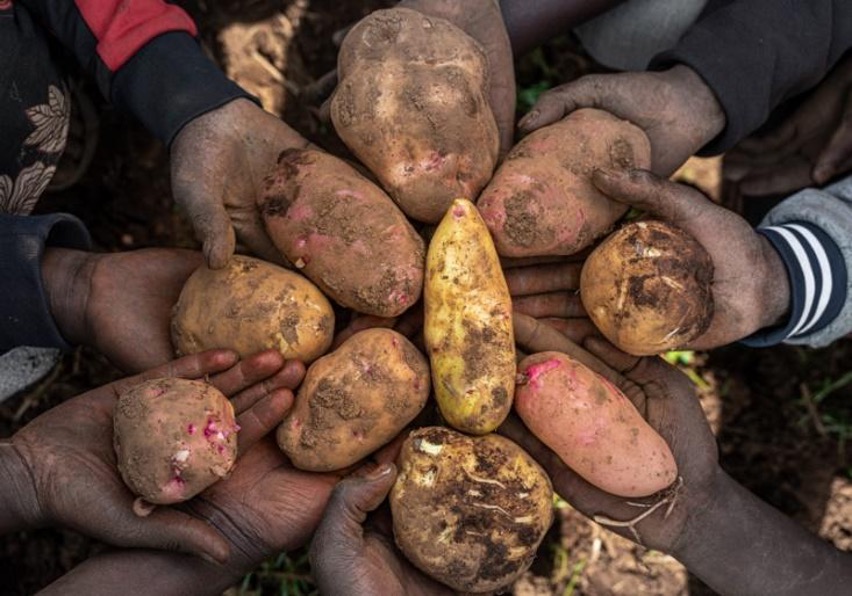
Diversity of potatoes in the BOLD Project trial. Photo: Crop Trust/Mike Major
Categories: For The Press, For Partners, For Policymakers, BOLD, Potato, Environmental Restoration, Sustainable Agriculture


